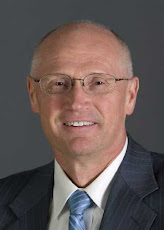The earlier comments were that consumer confidence did not matter, that it was a hoax.
The problem with disregarding "unreal" things like consumer confidence is that perceptions are real things which significantly affect things, and in unforeseen and major ways. Otherwise, forecasts would be easy.
One of the things you learn when you are in business marketing a product or service is that perceptions are real, even if a perception is not true. For example, in 1974 the media made a big deal about apple growers using a chemical called Alar on apples, claiming it might have an adverse health effect. People got scared and bought far fewer apples, despite the fact that there was in truth no health concern about the product. Perceptions have real market effects. The apple growers lost money.
The same is true for consumer confidence. When people get concerned about their financial security because of real or imaginary events publicized in the media, they are a bit more cautious with their money. They spend less and save more. Individually, that is likely a good and prudent thing. Collectively, however, the reduced consumer spending has the effect of causing the economy to slow down, kind of a self-fulfilling prophecy.
The markets are clearly affected by psychological factors, swinging from greed in a bubble to fear in a downturn. This is nothing new, and nothing concocted by the media in either the Bush or Obama presidencies. We clearly were in a bubble stage at 14,000 Dow. Only time will tell whether 10,000 is a good number.
I, however, am optimistic that nationally we have hit bottom and we will begin a slow recovery. Are there hazards? Yes. Are there things that could throw the economy backwards? Surely, there always might be. But, I am betting my money on the resilient American economy. In other words, I am putting my money where my mouth is.
Her response was to cite the following articles which contain the free market view: http://mises.org/story/851, http://mises.org/story/1156, http://www.cato.org/pubs/journal/cj16n1-7.html and http://mises.org/story/3194
I believe there is a way to reconcile the two views.
- The paradox of thrift has a short run effect, without subsequent reallocation of resources and readjustment of prices. In the short run, no matter how much additional production occurs due to the additional savings and investment, the economy is not helped much. Just ask the (former) Big Three automakers with their swollen inventories in the past two years despite generous rebate programs.
- On the other hand, in the long run, with time for resources to be reallocated and prices to adjust, additional savings will drive interest rates down, which will not only discourage additional savings but also drive down the costs of business, allowing either higher business earnings or lower prices of the business’s products. With anemic demand, the most likely result is a reduction in prices to ultimately increase purchases to reduce those inventories. Over time, the free market system will bring things back into equilibrium, at least until the next disruptive event.
A problem in this long run scenario is the downward “stickiness” of some factors of production, most notably the wages of union workers. To the extent that these wages are not adjusted to “market clearing” levels, the equilibrium is hard to obtain. There are many other factors that drag on these adjustments as well, in our “mixed economy”.
So, I am aligned with your thinking that in theory, the economy would readjust itself and get back into equilibrium without any government intervention. What concerns many economists, however, is that despite low interest rates and a collapse of spending and mass underutilization of labor and other resources and falling commodity and other prices, the economy did not pick up for years and years in the Great Depression. (What we were taught was called “the liquidity trap”.) The danger of that experience being repeated is what brings many to support government intervention to shorten the downturn.
Of course, there is no free lunch, and the deficit spending must ultimately be paid for with increased taxes, which ultimately are a drag on the economy. When I took freshman economics, the textbook taught that there was always a net positive impact of government spending. They never mentioned the downside of the taxation, which in the long run counterbalances the stimulus. Alternatively, in the short run, instead of raising taxes, a deficit may occur which is financed by government borrowing, which has the impact of increasing the interest rates, another drag on recovery. If the Fed then tries to counteract that with increasing the money supply to hold interest rates down, then the danger of inflation rears its head. Hmm, sounds like fix after fix requires further fixes, huh?
Comments? Way too technical? Sorry, the world is a complicated place.


No comments:
Post a Comment